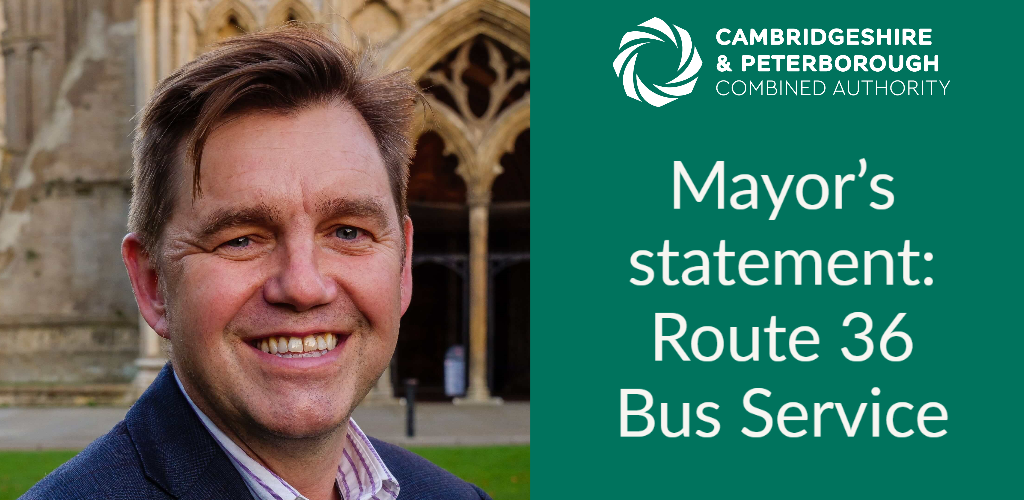Mayor hosts roundtable as accessibility champions provide transport advice

A good turnout of accessibility champions joined the Mayor of Cambridgeshire & Peterborough this week at a roundtable to help shape the Combined Authority’s work for inclusive transport that matches the needs and aspirations of people of every age and ability.
In the run-up to Better Transport Week, of which the Combined Authority is a key partner, Mayor Dr Nik Johnson, brought together local experts and advocates to map out with the Combined Authority’s transport team how an inclusive public transport network for Cambridgeshire & Peterborough should evolve.
Among the groups invited were the Royal National Institute of Blind People, Camsight, Cambridge Dial-a-Ride, Healthwatch and the Papworth Trust.
Mayor of Cambridgeshire & Peterborough Dr Nik Johnson:
“If public transport isn’t accessible for everyone, then it’s not really public. Those with accessibility needs must not be left behind. And if the infrastructure we put in place to help people move around safely – by wheel or by foot – doesn’t work for everyone, then it’s just not good enough.
“I’m determined that new infrastructure for wheeling, walking and cycling should have people at its heart, that it doesn’t skimp the extra bits of tech or effort which can make a massive difference, make it possible for whole groups of people to enjoy the world of opportunity.
“I invited accessibility champions to a roundtable, to hear first-hand, what their experience is using public transport or active travel routes. Their feedback is vital in ensuring we have a travel network that is suitable for everyone.”
The virtual event gave delegates the chance to hear first-hand the Combined Authority’s accessibility ambitions, and most importantly, to feed in their own personal experience and professional insights into how all modes of transport can be integrated and work for each traveller.
The Mayor invited the group to discuss challenges and obstacles to inclusivity in getting about, and to focus on ways in which public transport, walking, wheelchair and cycling routes can be made both more usable and more user-friendly for everyone they are intended to serve.
- Delegates spoke about how buses can be difficult to use by people with visual impairments because they cannot see where the stops are.
- ‘Talking buses’ which announce stops were suggested as a solution – and talking bus stops that report what bus has arrived.
- Dangers of combined walking and cycle routes
- Better lighting at bus stops to make people feel safe – especially women late at night
- Wheelchair spaces on buses aren’t big enough for modern wheelchairs to turn in – and often a wheelchair user gets on the bus only to realise there is already someone using the space.
Plan your Journey
